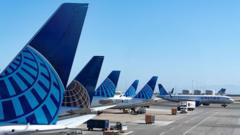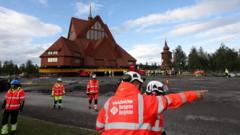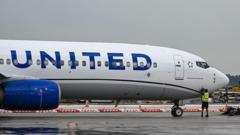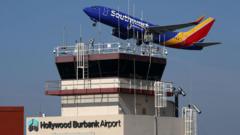Air traffic controllers at Newark Liberty International Airport encountered a distressing situation last week when they lost communication temporarily with aircraft in their jurisdiction. According to reports, officials stated the controllers were "unable to see, hear, or talk to" planes under their care during a critical 30-second window on April 28. The aftermath of the incident led to multiple staff members going on trauma leave, exacerbating ongoing delays and resulting in over 150 flight cancellations by Monday, as recorded by FlightAware.
U.S. Transportation Secretary Sean Duffy confirmed the brief communication failure but assured that it did not pose an immediate danger to the planes, stating, "they have communication devices." However, he acknowledged that the incident highlighted the vulnerabilities in the current air traffic control system, indicating that more rigorous improvements are necessary.
The Federal Aviation Administration (FAA) also recognized that the antiquated structure of the air traffic control system has been detrimental to operations. Consequently, they reported that they are struggling to quickly replace the controllers now absent due to the incident, which could further delay the much-needed reforms for the busy Newark airspace. Criticism towards the airport's air traffic control efficiency has escalated, particularly after United Airlines announced the cancellation of 35 flights daily. United CEO Scott Kirby indicated that systemic technology failures among FAA controllers had repeatedly resulted in flight diversions and delays.
In light of the crisis, the National Air Traffic Controllers Association revealed that employees took leave under provisions for those dealing with traumatic work experiences; however, they refrained from disclosing the specific number of controllers affected. As this communication lapse unfolds, the U.S. Department of Transportation is in the process of unveiling a strategy aimed at increasing FAA staffing levels, with a goal of hiring at least 2,000 additional controllers by the end of the year.
In a broader context, Secretary Duffy emphasized the urgency of obtaining congressional support to secure billions in funding for a complete overhaul of infrastructure and staffing, promising the establishment of a robust air traffic control system encompassing new technologies.



















